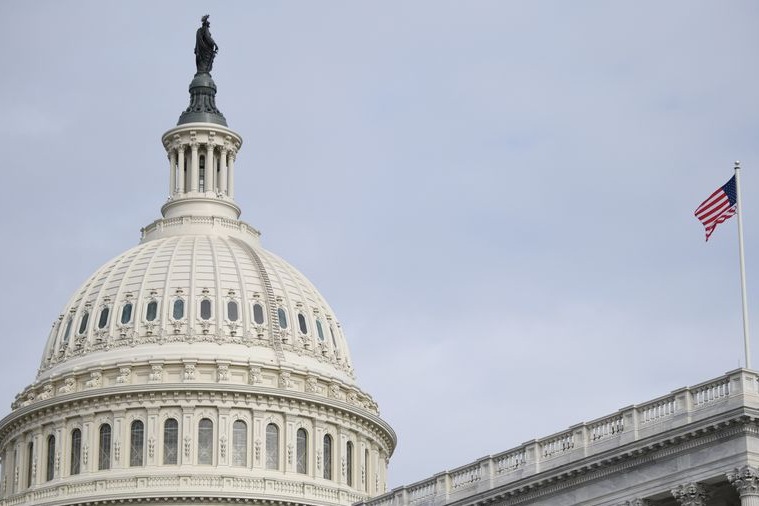Beyond the Headlines – China and its fight against pollution


I'm sure most people vividly recall trips to China where blue skies were the norm. Of course, there are times I have landed in China and looked out to see not-so-blue skies there. The point I want to make with this is the fact China has undergone considerable effort to balance rapid economic growth and environmental protection — no easy feat.
Over the past few years, China stepped up efforts to address this at both national and provincial levels. Laws and policies on environmental protection, such as the revision of the Environmental Protection Law in 2014, are driving improvements across sectors by improving cooperation among different government departments, and empowering local officials with tools to hold those responsible for pollution to account.
As a result, in 2016, it was reported that 25 percent of Chinese cities met national air quality standards, which is a significant 4 percent improvement over 2013. I see this as an early indication government policies on environmental protection are making progress and that companies in China are taking climate change very seriously.
The rise of China and other emerging Asian economies over the last few decades has lifted hundreds of millions of people out of poverty and been a major contributor to economic growth in and beyond this region.
But as with everything else, progress comes with its downsides — and in this case, many point to what they can see happening around them in China when they visit or work there: environmental degradation, overcrowding in cities, traffic congestion and increasing pollution. Often fingers are pointed at urbanization and the burning of thermal coal, which accounts for 40 percent of energy consumption in emerging markets as the main culprits.
But, rather than the negatives, let's focus on some of the proactive measures the government has taken in the last half-decade to address pollution in China.
In September 2013, the Action Plan for Air Pollution Prevention and Control set ambitious PM2.5 reduction targets for key regions including Beijing-Tianjin-Hebei, the Pearl River Delta and Yangtze River Delta, under aggressive timelines. This plan ensured the establishment of regional and provincial action plans for achieving ambient air quality improvements.
In April 2014, a new revision of the Environmental Protection Law took effect. It strengthened the authority of environmental protection agencies, requiring key emitters to disclose emissions data, increased penalties for violations, and enhanced the role of NGOs in environmental governance.
In September 2014, the National Climate Change Plan for 2014-2020 was issued. It outlined China’s strategy to achieve its 2020 goals of carbon intensity reduction and set a target to stabilize CO2 emissions from energy-intensive industries to 2015 levels by 2020. Specifically, the plan aimed to reduce China's carbon intensity by up to 45 percent by 2020 from 2005 levels, and to stabilize CO2 emissions from the steel and cement industry by 2020. The plan also includes carbon reduction obligations for provinces, cities and ministries.
Between 2014 and 2017, a series of national energy policies was issued, focusing on steering China’s energy development toward lower-carbon sources. These policies include measures to rapidly scale-up renewable energy such as wind and solar, improve natural gas supply and infrastructure and increase the role of nuclear energy. The government is also prioritizing deployment of new energy vehicles, and enhanced energy efficiency.
Among these moves, I'm very encouraged to see significant efforts at developing green energy sources, including solar and wind, which form a key part of China's development plan to achieve its desired outcomes for air quality improvement across the country, especially in key areas like Beijing, Tianjin and Heibei. Commendable actions indeed.
The improvement of air quality also has other long-term health implications. Recent research from the University of Chicago shows that China’s fight against pollution has already laid the foundation for extraordinary gains in life expectancy. According to this research, China’s population could expect to live 2.4 years longer on average if the decline in air pollution persists.
But, as last year's winter gas crunch showed, the switch to cleaner energy could take longer, as China still needs to secure enough storage facilities and update pipelines. As a result, the switch from thermal coal to other clean energy in China, and the rest of Asia, continues at a slower than expected pace. But the important thing is that, it's happening. So while the Chinese government's ambition to shift energy dependency to renewable sources looks promising, there needs to be support from the private sector as well.
Fostering risk management expertise and making new, cost-effective insurance products available to facilitate the investment decisions essential to growth and innovation in the renewable energy sector in China is the first step. In recent years, the concern over air pollution has become an urgent issue among both the Chinese people and their government. Coal burning is a main culprit contributing to air pollution, which brings with it health risks. And with many Asian families remaining underinsured and unprepared to deal with these issues, managing this will remain a key task for Chinese policy makers.
This is the reason I'm very much focused on supporting China as part of our overall strategy. At Swiss Re, these are the concerns that we hope to be able to support societies with by either providing risk knowledge or by providing capital. In seeking to bring more of these risks under our shelter we not only enable Asia to grow and prosper, we also enable people here to live better lives.
The author is CEO of Swiss Re Asia Pte. Ltd.


































